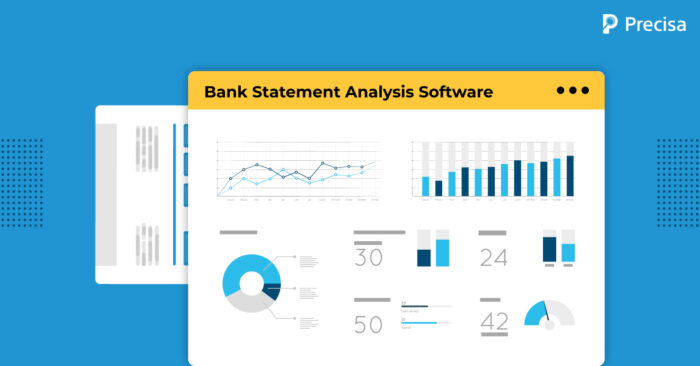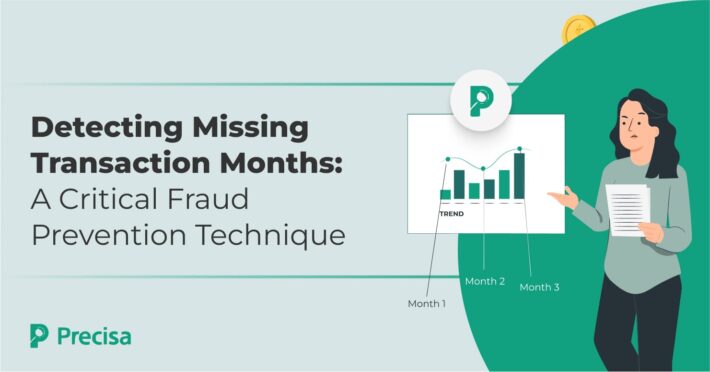Benefits of Bank Statement Analysis Software in Insurance Underwriting

Since 2020, the insurance sector has experienced an accelerated rate of digital transformation. Triggered by the growing demand for digital insurance services, companies aimed to implement basic processes such as digital customer service, payments, and renewals.
However, companies are still struggling to respond quickly to the growing demand for Business to Business (B2B) and Business To Consumer (B2C) insurance services. As enterprises aim to gain a competitive advantage in the market, speed and accuracy will be differentiating factors.
Lending underwriting is a major, but not the only function served by bank statement analysis software. Another emerging area it can significantly benefit is the global insurance sector.
In this blog post, we explore how using bank statement analysis software can help expedite the insurance underwriting process and make the outcomes more accurate.
What Is Bank Statement Analysis Software?
Insurance companies must deal with massive amounts of data, which need to be analysed as part of the underwriting process. These can include financial documents such as income, financial operations, and financial history.
The human eye traditionally analyses this process for errors, omissions, cooked books, and documentation fraud and impersonation cases. However, as insurance applications keep growing, insurance companies must automate the process to keep pace with demands while accelerating the pace of insurance underwriting.
This is where bank statement analysis software can automate the process and deliver higher value through the use of technologies such as artificial intelligence (AI) and machine learning (ML).
It offers in-depth, value-added data insights on a company’s financial data to help underwriters make accurate decisions.
Snapshot of The Insurance Landscape
India’s insurance sector is considered one of the fastest growing in the world. It is expected to have the six largest market size globally by 2032. In 2021, the government raised the Foreign Direct Investment limit from 49% to 74%, which is expected to fuel its growth further.
In terms of the types of B2C insurance available and in demand, the spectrum includes:
- Life insurance
- Cyber insurance
- Travel insurance
- Motor insurance
- Health insurance
- Personal accident insurance.
On the other hand, the B2B insurance spectrum includes general liability, commercial property, auto insurance, professional liability, and cyber insurance, to name a few.
The inability of traditional players to keep pace with demands, and offer customised services, has given rise to several digital-first insuretech businesses. These companies have a competitive edge because of their digital capabilities.
However, traditional players already have established trust and a secure foothold in terms of market share. They are attempting to leverage technology to keep pace with the demands of the modern age and offer error-free services. Bank statement analysis software can play a significant role in this journey.
5 Benefits of Bank Statement Analysis Software
Let’s explore the advantages bank statement analysis software brings to the table.
1. Error-Free, Comprehensive Analysis
The volume and diversity of financial data available keep growing as more businesses and retail customers choose to be insured.
The financial data analysed during the insurance underwriting process typically includes balance sheet statements, income statements, cash flow statements, and profitability statements. It takes an immense amount of human labour to analyse the data manually.
However, bank statement analysis software automates processes, thus reducing duplication, errors, and inaccurate analysis. It ensures that no documents are left out of the process.
2. Quicker Turnaround Time
As insurance companies compete for market share, those offering a quicker turnaround on insurance underwriting will have an edge. Automated processes can reduce the time taken for underwriting by almost 50%. This is another reason why more companies are adopting the use of bank statement analysis software. With this addition to their tech stack, they can scale their businesses faster.
3. A Cost-Effective Underwriting Process
Companies are constantly looking to optimise the underwriting process and reduce costs. Using smart technologies like bank statement analysis software will reduce human labour costs for basic processes. Therefore, human capital can play a more strategic, high-value role in processes.
4. Accurate Assessment Of Risk Profile
Analysing the risk profile of a new insurance applicant – whether B2B or B2C audiences – is important for an insurance company’s successful growth. Incorrect risk analysis can lead to a rise in insurance fraud cases, higher–ticket financial liabilities, and larger settlements.
For instance, an insurance company must be able to accurately assess the risk potential of a company by analysing the financial documents of the business accurately. The human eye, no matter how trained or experienced, may not be able to catch instances of forged documents.
However, technology such as bank statement analysis software is programmed to catch even minute differences and detect irregular financial patterns.
5. Offering Inclusive Services
There is an ongoing drive by insurance businesses to bring more uninsured retail and business customers into the insurance ecosystem. The effective use of technology can enable them to include unconventional data points to drive access.
For instance, insurance companies can now consider Goods & Service Tax Returns (GSTR) data to determine the creditworthiness of businesses with a limited credit history.
Bank statement analysis software has the capabilities to be programmed to analyse such data. Insurance companies can also recommend customised insurance plans relevant to businesses, especially in the Micro, Small & Medium-size Enterprises (MSME) category.
The Takeaway
The global insurance sector grew from a market size of $ 5946.74 billion in 2022 to $ 6466.23 billion in 2023. According to Life Insurance Council data, in October 2022, insurers’ new business premiums grew to $ 1.94 billion in India. The premiums from the country’s life insurance industry alone are expected to reach $ 317.98 billion) by Financial Year (FY) 2031.
Despite these predictions, the penetration of B2B and B2C insurance in India is far from reaching its full potential.
Smart AI-driven digital tools, such as fintech-enabled bank statement analysis software, can play a significant role in reducing the gaps. Using such tools can help insurance companies shift to efficient, inclusive and scalable operations, driving revenues and profitability.
Today, many businesses are turning to Presica’s comprehensive and seamless financial data analysis solution to simplify and speed up the process through automation. The software provides actionable insights on a customisable dashboard, thus helping companies make informed business decisions.
Request a free demo today!




